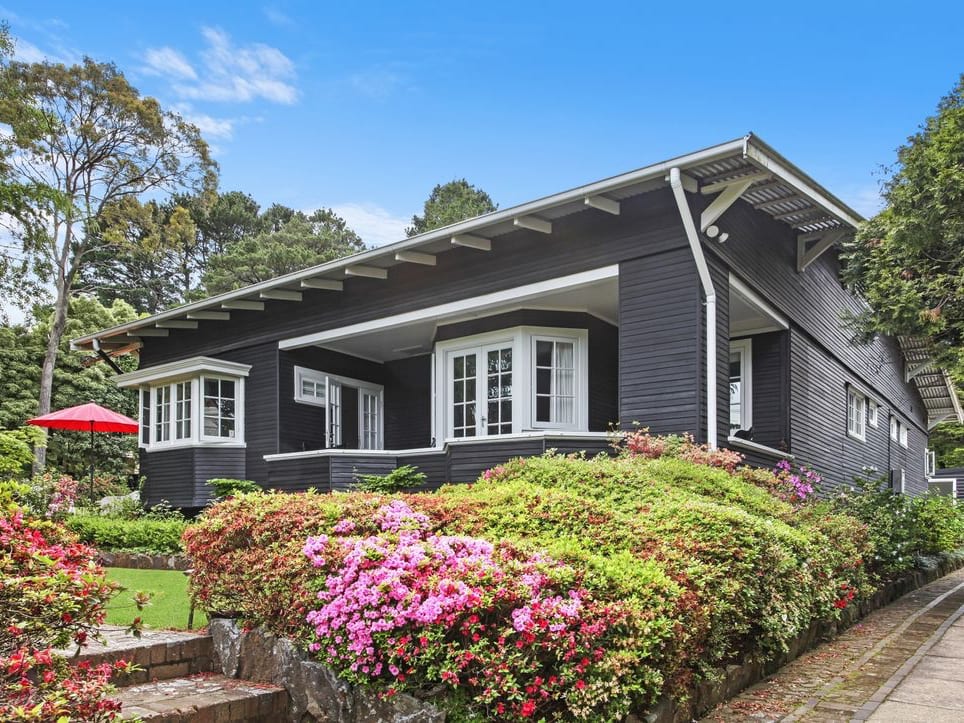Rentvesting – which sees buyers rent a property where they want to live and buy an investment property in a suburb they can afford – is a growing trend across Australia, challenging traditional thinking about home ownership.
Rentvesting is a way forward for people who want to break into the property market, without sacrificing their lifestyle.
Ben Kingsley, the CEO of specialist property advisory firm Empower Wealth and co-author of The Armchair Guide to Property Investing, says in capital cities, particularly in Sydney and Melbourne, there’s a significant price difference between the cost to buy and the cost to rent.
With rentvesting, investors can get the best of both worlds because they can afford to rent where they want to live and put their “spare” funds to work by buying elsewhere and renting that property out.
“Let’s say you could afford to buy in inner Melbourne and the mortgage repayments to do so were $3250 a month, yet if you were to rent a similar property in the same location, it would cost you $1750. You would have a ‘spare’ $1500 a month to invest,” he says.
“The trick of course, is that you must invest the difference (not just spend it) to build your wealth for this strategy to work.”

If it’s too expensive for someone to buy where they want to live, they have the option of renting through rentvesting. Picture: Kevin Laminto/Unsplash
The pros and cons of rentvesting
For many, rentvesting is a compromise they can live with when it comes time to make the call between buying or renting. But is the strategy simply a compromise or can it be even more; a smart, long-term wealth-creation strategy?
Kingsley breaks down the pros and cons of rentvesting to work that out.
The pros
Lifestyle
Kingsley says if it’s too expensive for someone to buy where they want to live, they have the option of renting through rentvesting. “There are many reasons why you may want to live in a particular area; better schools, a safer neighbourhood, a bigger house, or proximity to lifestyle amenities and perhaps family.”
Wealth building
Because rentvestors save on mortgage repayments and invest the savings into one or more investment properties, they build wealth.
It’s “all care, no responsibility”
Rentvesting delivers the perks of being a tenant; the main one being the notion of “all care, no responsibility”, Kingsley says. Unlike owning, any issues with a rental property are ultimately the landlord’s responsibility and maintenance costs comes out of their pocket, not the rentvestors’.
Ability to go with the flow
Renting gives people the flexibility to live in a variety of places and property types, so they’re able to “go with the flow” a lot more than if they owned their own home, Kingsley says. Given the high cost of selling and then re-buying property, this option is not always financially sensible for traditional investors.
Tax benefits
With an investment property, it’s possible to initially claim holding costs, plus depreciation costs each year. In addition, some of the initial costs, such as stamp duty, conveyancing and lending fees can also be claimed, depending on the situation.
The cons
Loss of full capital gains tax exemptions
There are negative tax consequences of rentvesting. “If you own the house you live in, you are exempt from paying capital gains tax (CGT) if you sell it. Whereas if you sell your investment property, you are liable to pay tax on the profit you make,” Kingsley says.
Giving up on a dream
The “Australian dream” dictates that people buy a house and make it their own by adding personal touches. Rentvestors are still renting, so don’t have the same freedom and need the landlord’s permission to make substantial changes.

The “Australian dream” dictates that people buy a house and make it their own. Picture: realestate.com.au/buy
Less control
As a renter, the landlord has rights and control over the property, which can create uncertainty for tenants.
The “what will people think?” worry
Rentvesting goes against the entrenched norm in Australia of living in “your own” home, so rentvestors can expect peer pressure from family and friends who just don’t understand their decision to continue to rent.
Which is better – rentvesting or buying-to-live?
To investigate which strategy can potentially get a better return, Kingsley looks at an example of an investor named Matt, who is 27.
He’s an engineer earning $75,000 per year and has been living at home while he saves for a deposit. He’s been diligent with his money and saved $70,000. His parents have seen his hard work and are willing to chip in $30,000, so he can get on the property ladder sooner. This means he has a total deposit of $100,000. But even with this deposit, his budget isn’t enough to buy a house in inner-city Melbourne, which is where he wants to live. So, is it better for him to rentvest?
The reality is, if Matt were to buy-to-live, the maximum amount he could borrow would be $415,000, based on his income and living costs. So, if he put down all of his savings as a deposit (minus upfront costs to buy), his maximum purchase price would be $495,000.
“But here’s where it gets interesting; if Matt were to rentvest instead, he could use the rent he receives, plus his own money, to increase his borrowing power. In this case, the maximum amount he could borrow would be increased to $520,000, which brings his maximum purchase price to $570,000,” Kingsley explains.
But why increase borrowing power?
Kingsley says while people shouldn’t overstretch themselves, if they can borrow more money from the bank, they can typically purchase a better property. A better property is, of course, a better investment asset, which means it should deliver a better return over time, he says.
But what about all that money spent on rent?
If Matt chose to rent with his mates in his dream location, then he would be forking out $12,000 per year instead of buying his own place. But that overlooks that he will also be receiving rent – almost $21,000 – from his new investment property.
“This is important to realise, because it means he can hold a higher-value asset and, even with the added costs to hold the investment property, Matt will be in a more solid cashflow position than if he just bought his own, lower priced home,” Kingsley says.
Crunching the numbers
Kingsley ran the numbers for Matt’s situation to compare the decision to buy-to-live versus rentvest, and not just from a cashflow position, but also a net worth position…
| Buy to live | Rentvesting | |
| Gross wages | $75,000 | $75,000 |
| Living costs | -$23,000 | -$23,000 |
| Purchasing power | $495,000(wages only) | $570,000 (wages & rent) |
| Buying costs | $17,015 (First Home Buyer benefit) |
$45,420 (pay Lenders’ Mortgage Insurance) |
| Mortgage | $414,608 (83% LVR) |
$517,782 88.5% LVR) |
| Surplus cash | $2,593 | $2,542 |
After purchase
| Buy to live | Rentvesting | |
| Outgoing rent | $12,000 (Renting a shared apartment) |
|
| Gross rental income | $20,976 (5% yield, 92% occupancy) |
|
| Rates, upkeep | -$7,425 | -$8,600 |
| Property management (7.7%) | -1,600 | |
| Loan repayments (6% interest-only) |
-$24,876 | -$31,067 |
| Depreciation claimed | $3,459pa (for 20 years) |
|
| Income tax payable | -$17,500 | -$9,900 (after deductions) |
| Surplus cash | $2,199 | $9,809 |
After 10 years
| Buy to live | Rentvesting | |
| Gross wages | $101,800 | $101,800 |
| Living costs | -$41,850 (including property costs) |
-$31,650 |
| Outgoing rent (5%pa) | -$19,850 (Renting a shared apartment) |
|
| Gross rental income | $37,550 | |
| Rental property expenses | -$14,400 | |
| Mortgage interest (with offset benefit) |
-$18,850 | -$18,750 |
| Income tax payable | -$24,650 | -$25,500 |
| Surplus cash | $4,700 | $9,750 |
| Savings in offset account | $23,950 | $85,000 |
| Net mortgage debt | $321,350 | $326,000 |
| Property value (@6%pa) | $886,450 | $1,020,800 |
| Net worth (excl. super) |
$565,100 | $694,800 |
After 20 years
| Buy to live | Rentvesting | |
| Net property income | $46,650 | |
| Surplus cash | $16,850 | $17,900 |
| Savings in offset account | $122,500 | $101,800 |
| Net mortgage debt | $40,200 | None |
| Property value | $1,587,550 | $1,828,050 |
| Net worth (excl. super) |
$1,547350 | $1,929,850 |
But no one wants to live in a share house forever, right?
“It’s unlikely that Matt will stay living in a share house with his mates for 20 years and so much could have happened by then; he might’ve met his future life partner and started a family or he might’ve used the equity in either scenarios to buy another property, or he may have increased his rent, so he could afford to rent an apartment on his own,” Kingsley says.
But the point is; when comparing the buy versus rentvest decision, it’s important to consider the full financial impact and this is done by forecasting over the long term.
If Matt was to rentvest, in 20 years, his wealth position would be looking quite solid. He would be receiving $46,650pa in rent (on a property that’s predicted to keep growing in value) and he would be mortgage free, Kingsley says.
“The biggie is that he would be financially better off to the tune of $380,000 over 20 years if he went against the grain and chose to rentvest.”

There is usually is a limit to how long a person can house share for. Picture: Getty
So, is rentvesting the way to go?
Rentvesting works best when there’s a noticeable difference between what it costs to buy versus rent in the same area.
Kingsley says ultimately, it’s more suited to those on higher incomes, because earning more generally results in a higher borrowing power. But it’s also something a younger person can consider if they can’t afford to buy where they really want to live and are happy to take a road-less-travelled.
But every investor is different and people should always get independent financial advice.
article by realestate.com.au
